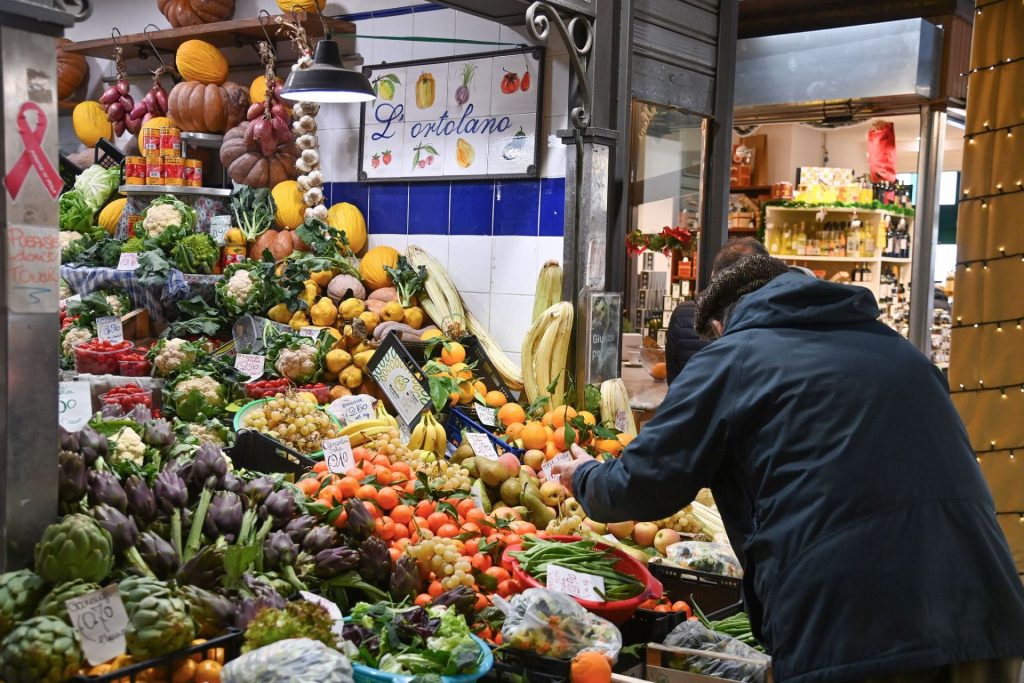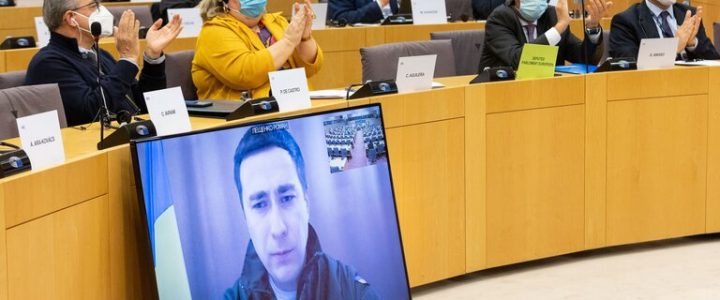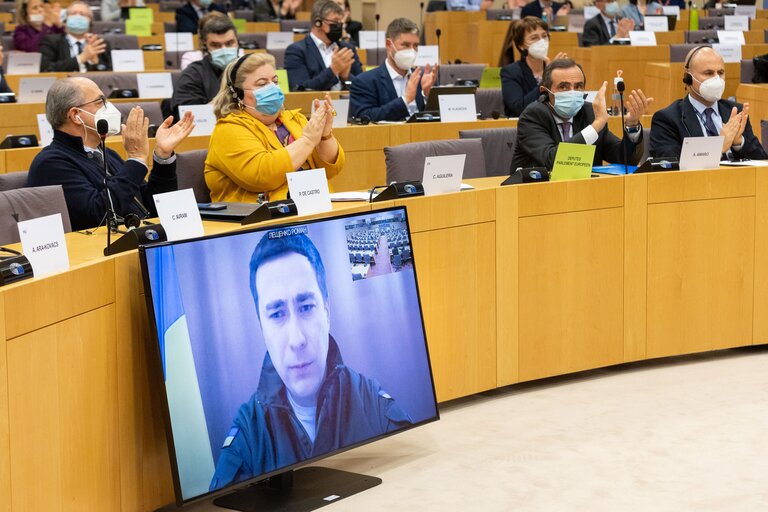The Ukrainian Agriculture industry is plowing on despite the Russian invasion
By Greg Kennedy + Kyran Berlin

It’s no surprise that the Ukrainian agriculture industry has taken a huge hit since the Russian invasion – however despite the setbacks from Russian invaders, Ukrainian farmers are plowing on. The main problem now for the industry is moving the goods to war-torn areas and other countries, as seaports are blocked by Russian troops and many methods of transport are no longer viable.
Agricultural workers of Ukraine are currently utilizing 72% of the farmland used pre-invasion, about 13.8 million hectares. The rest is occupied by the Russians, according to Ukrainian Agribusiness Club (UCAB) Analyst Svitlana Lytvyn.
Before the war, Ukraine’s main method of exporting goods was through their seaports, one of their biggest being in Odessa. However, the Russians continue to occupy these, blocking exports.
“Farmers have left products, the volumes of which exceed the internal needs of Ukraine and were intended for export and export earnings. Now there is practically no opportunity to sell these products,” said Lytvyn.
Anne Poulsen, director of the UN World Food Programme’s Nordic Office thinks that this blockage of exports is going to have a devastating impact in the poorest parts of the world.
“When the price of food and fuel prices increase in countries like Somalia or Sudan or Yemen or Afghanistan, I mean, this is really devastating. This is alarming for people… So ultimately, this will be a matter of life and death.” Poulsen said.
Ukraine produces enough food to feed 400 million people across the world, while they themselves are only a country of 14 million. Ukraine and Russia are often referred to as the world’s ‘Breadbasket’.
Lytvyn said that, “Foreign trade did not stop during the war,” however there are major issues with transporting the excess goods that the Ukrainian farmers have produced. The seaports are not the only problem, the only other trade routes are via the Danube river to ports in Romania or via rail through western Ukraine.”
Both methods have a myriad of complications – for example to go by rail requires negotiating with un-willing EU railway operators and changing wheels to fit a different width of tracks between the EU and Ukraine.
Much like the rest of Ukraine, the agriculture industry is stubborn, strong and continues to fight despite the obvious threats. “The main task now is to find alternative supply channels,” says Lytvyn.
To hear more about food supply in Russian-occupied regions of Ukraine, listen to the Ukraine DMJX EU Pod here.

The DMJX EU Pod: Will Russia’s invasion lead to a global food shortage?
[TRANSCRIPT]
INTRO
GREG:
Hello and welcome to the DMJX EU Report.
Presenting is myself, Greg Kennedy…
KYRAN:
And I’m Kyran Berlin.
GREG:
Today we dive into the story of Ukrainian farmers still working despite the war-time conditions and how Russia’s invasion has changed Ukraine’s food landscape.
But first, a roundup of the most recent news out of Ukraine.
KYRAN:
It’s Tuesday afternoon.
A Safe Passage Operation is underway in Ukraine to evacuate people from the Azovstal steel plant, where Ukrainians were forced to take refuge some weeks ago to escape Russian advances. NPR reports that 100 people have been evacuated from the plant, but more remain inside, including at least 20 children.
“Powerful explosions” were heard in the Russian city of Belgorod this morning, raising global concern that fighting in Ukraine may have spilled over the borders of both Russia and Moldova.
Finally, the US warned that Moscow may be planning on annexing parts of Ukraine by creating a sham referenda in mid-May and fabricating votes, according to the latest report from the US Organization for Security and Co-operation in Europe.
Now on to our main story.
MAIN STORY
GREG:
Earlier this week Russian troops raided approximately $5 million worth of tractors and farming equipment from a John Deere dealership in Melitopol, according to CNN.
However, after hauling the heavy machinery 700 miles to Chechnya, the plunderers found that the equipment had already been remotely disabled and were unusable.
This heist was part of a continued saga on the second war raging in Ukraine – that of the nation’s food and agricultural security, which Russia has pressured with port shutoffs, strategic targeting of agricultural areas and denial of humanitarian aid for Ukranians sheltered in hard-hit areas like Kyiv and Mariupol.
The UN warned that millions of Ukranians may be facing acute food insecurity in the coming months due to the ongoing conflict.
KYRAN:
In response, the World Food Programme has deployed staff on the ground to help with distributing rations and aid, but not without some difficulties posed by Russian troops. We spoke with Anne Poulsen, Director of WFP’s Nordic Branch, in mid April about the org’s current operations in Ukraine:
Some 50 days before we spoke the WFP had absolutely nothing in Ukraine…And bear in mind that this is the fastest growing humanitarian crisis in recent history… at this point we have 300 staff on the ground.”
“Right now, the WFP is providing food for one or food assistance for 1.4 million people, and are scaling up to reach a total of 6 million people inside of Ukraine. In addition to those 6 million people, they’re assisting people who have fled the country war in the border countries to Ukraine. So that’s another 300,000 people that the WFP is assisting outside of the borders of Ukraine”
However, while many Ukranians face a denial of access to food, others in the agricultural sector have harvested a surplus of it, but without safe routes to transport it for sale.
This adds to a global pinch on food supplies and other goods provided by Russia and Ukraine, which together provide about 40% of the world’s grains.
GREG:
Beyond the besieged cities, many farms across Russian-occupied regions of Ukraine have also faced shellings, threats and limits to their operation because of Russian presence, says Svitlana Lytvyn, an analyst with Ukrainian AgriBusiness Club.
“There is unused farmland in the zone of active hostilities (parts of the Donetsk, Luhansk, Kherson and Kharkiv regions for example). And some areas have already been liberated from occupation, but it is impossible to carry out sowing on their territories due to the mining of fields and the destroyed material and technical base.”
Lytvyn (LYTVIN) added that “in addition, up to 10-15% of the fields in the combat areas are contaminated with the remains of shells and mines, there are fields blocked due to road mines. Mined fields are one of the factors that do not allow timely sowing… Work has already begun on demining these territories by the relevant services, but this process is quite lengthy and it is very unlikely that they will have time to carry out a sowing campaign in these territories”
KYRAN:
Copa-Cogeca, an organization of farmers and agri-cooperatives in the EU, have pledged to maintain reliable food supplies to Europe as the conflict continues, and many Member States are assisting in supplying food donations, logistical support and humanitarian aid to Ukraine.
The WFP has purchased roughly 12,000 metric tonnes of wheat from Ukraine with the goal of supporting the nation’s local economy, in addition to providing rations and cash stipends in heavily impacted areas.
GREG:
As for the 72% of Ukrainian farmers who can continue their work, they still face uncertainty over where and how their harvest can be sold.
“Foreign trade did not stop during the war. Ukraine produces much more agricultural products than its own needs, and therefore can export a considerable amount of food without threatening its food security. There are practically no significant administrative restrictions on the export of grain, vegetable oils and most other agricultural products from Ukraine. The main task is to find alternative supply channels.”
Lytvyn summarized the situation by saying, “There will be no famine in Ukraine, but the world will be facing a global food shortage.”
Thanks for joining us here at DMJX EU Report.
(Exit).

